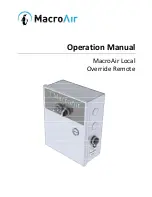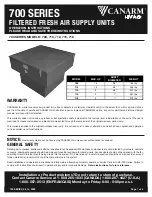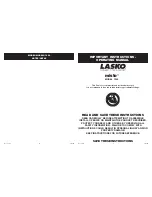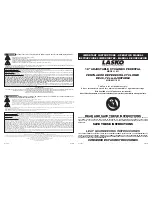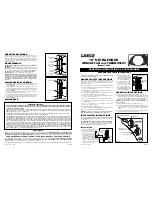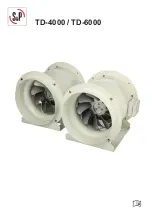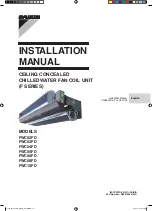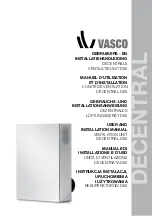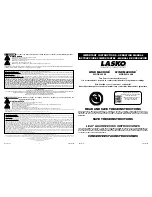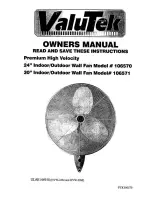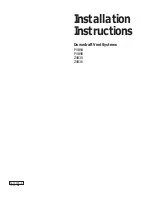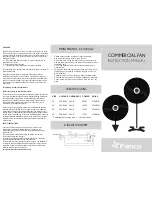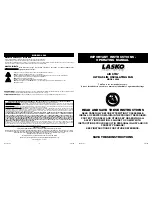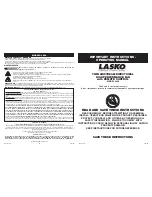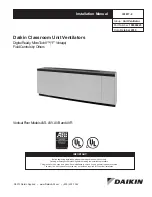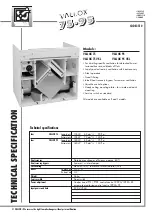
4
RIGGING
1. To simplify rigging and installation, units are shipped in one
piece, so only one lift is required. It is important to follow the
guidelines listed below when rigging these units.
2. Lifting devices have been provided for short lifts and final
positioning. The table “Approximate shipping weights” on page 7
shows the location of the lifting devices for each tank size. For
safety, it is recommended that for extended lifts or whenever
hazards exist, safety slings are used in addition to the spreader
beams.
3. Lifting and transportation of the equipment by means of lift
trucks is not permitted, as this may result in serious damage of
the tank bottom and the ice coils.
4. Spreader bars of the full width of the section must be used
between the lifting cables to prevent damage to the section.
For extended lifts or where hazards exist, it is recommended to
use the lifting devices in conjunction with safety slings placed
under the unit.
ON A LEVEL CONCRETE PAD
The unit should be continuously supported on a level concrete pad.
After the unit is set into final position, the tank bottom should be
sealed airtight all around to prevent condensation formation (see
figure). The sealer is shipped loose with the unit, together with the
air pump.
1. Seal around base of tank
ON 3 I-BEAMS
If continuous support is not possible, an alternative recommended
support arrangement consists of 3 parallel I-beams extending the
full length of the unit: 2 supporting beams should be located along
the unit length and 1 beam should be located on the centreline of
the unit. (see figure)
Each beam should be sized for 65% of the total operating weight. If
a unit is installed on I-beams additional insulation of the tank
bottom is necessary to avoid the formation of condensation.
ON A ROOF
For installation of the unit on a roof, additional field insulation
between tank bottom and the roof is required to prevent
condensation formation on the ceiling of the floor below (see
figure). Recommended insulation material is a vapour tight cork
layer.
1. Cork layer
General Notes
Support requirements
Figure 1: Unit continuously supported on a level concrete pad
Figure 2: Installation on 3 I-beams
Figure 3: Installation on the roof













